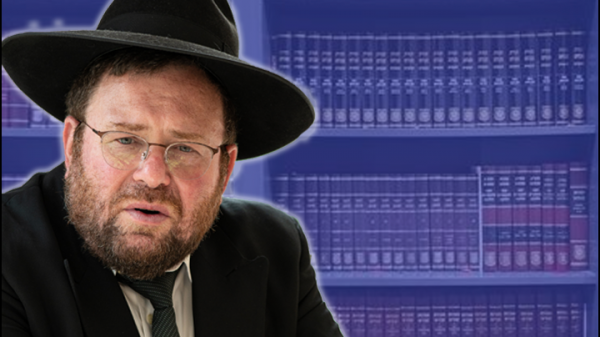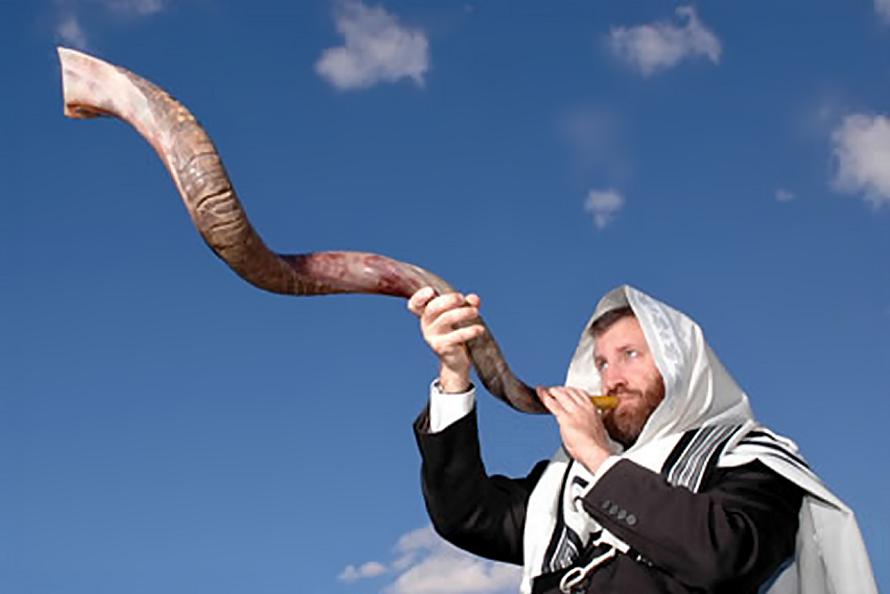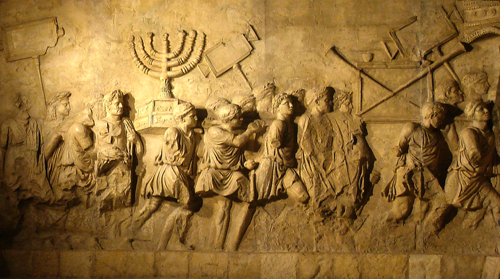Click here to download PDF
Rebbe Akiva vs Hillel
“And you should love your friend like yourself” Rashi brings from the Toras Kohanim the famous statement of Rebbe Akiva: “This is a ‘KLAL GADOL’– great inclusive principle in Torah”. What does this mean? If he means to say that this encases the entirety of Torah, then what is he adding above and beyond what was said generations earlier by Hillel? The Gemara in Shabbos (31 A) relates that someone came to Shammai and asked to be taught the whole Torah whilst standing on one leg. Shammai pushed him away with “Emes haBinyan” – a measuring stick used in construction. He went to Hillel who said, “what you hate do not do to your friend and the rest is commentary, go learn”. What was Rebbe Akiva adding to what Hillel had already said? What was the person really asking when he said, teach me the whole Torah “on one leg”? What is the significance that Shammai pushed him away with this tool called “Emes haBinyan”?
As much as myself?!?
The meforshim are troubled by this great demand that the Torah placed on a person to love someone else as much as himself. How can this be fulfilled literally? This is especially troubling because we know it goes against the halacha of “chayecha kodmim”, you must look out for your own safety first (Bava Metzia 62 A – see Ramban here). We can further ask this as a contradiction between statements of Rebbe Akiva. His statement brought by Rashi that “this is a great inclusive principle in Torah” would sound like it is to be taken literally. However, Rebbe Akiva himself was the one who gave the ruling of “chayecha kodmim” and that one should not share his water if he needs it for his own survival. How do we reconcile the contradiction to uphold the law of “chayecha kodmim” and yet fulfill love your friend like yourself literally?
Talmidei Rebbe Akiva
There is an irony here. Rebbe Akiva was the one who said to love your friend like yourself is a great inclusive principle in Torah and yet, he had twenty-four thousand students that died during the Omer because they did not conduct themselves in a manner of honoring each other. There is much that begs explanation in this story that’s recorded in Yevamos 62b. First of all, the Gemara says there were “twelve thousand pairs of students”. Why didn’t the Gemara just say twenty-four thousand individual students? What is the significance that they were in ‘pairs’? the Gemara tells us that they died in the Omer period. Chazal tell us elsewhere that they actually stopped dying on Lag B’Omer which is the reason for the joy and the cessation of the mourning. Why did they die during the Omer period which is the time to prepare for receiving the Torah? One would have thought that they should have died during the Three weeks, as that is when we were taken to task for “sinas chinam”– baseless hatred. Why were they taken to task for this during the Omer period and what changed mid-Omer on Lag B’omer? A clue to all this is in the words of Rebbe Akiva that Rashi brings “this is a great inclusive principle in Torah” as if this command has something to do with preparing to receive the Torah, which is what we do during the Omer.
Why Fight?
Before we can analyze and explain Rebbe Akiva’s legacy, that in the words of the Arizal, made him the “pillar of Torah shebaal peh”, we need to make an observation about an interesting phenomenon that we find in Torah shebaal peh. The Gemara says (Kiddushin 30 B) “…even a Rebbe and talmid and even a father and son when they learn Torah become enemies to each other. But they do not move from there until they love one another”. Why must this happen? It seems that this is not just an occupational hazard of learning Torah, but Chazal actually actively sought it out. When Rav Yochanan lost his chavrusa Reish Lakish, they set him up with Rav Elzar ben Padas who supported everything Rav Yochanan said with a b’raisa. Rav Yochanan didn’t like that and said that he missed Reish Lakish, who would raise 24 questions on everything said and Rav Yochanan would have to give 24 answers and “with that the learning expanded” (Bava Metzia 84A). We find that Rav Shimon bar Yochai in the Zohar urges his Talmidim to engage in the “battle of Torah”. Dissent and disagreement are not only a fact of life, they were looking for it. There are two explanations for this phenomenon. Firstly, the ‘sparks that fly’ in argumentation brings out details that would have remained hidden and undiscovered if everyone would have been in agreement. There’s another function of great cosmic significance. All questions, all confusion, all areas of doubt are as a result of the imperfections of the world which affect our minds also. When one of the ‘chavrusas’ raises a problem, or poses a kasha, he is actually zeroing in and targeting a cosmic problem and the fact that he raised the question is good, otherwise the problem would have been ignored. His raising the problem is to raise a target for the other chavrusa to take aim at and shoot down with an answer and this ‘clears the air’ of confusion and doubt that the sitra achara wants to plague us with. The more the volleys back and forth, the more targets are raised and then shot down. With this Rav Chaim Vital explains why at the beginning of a day a person should learn Iyun with a tremendous amount of pilpul and he says that his Rebbe, the Arizal used to pose intense pilpulim of questions and answers to the point that he would sweat profusely. This is all to clear the air and that’s why later in the day, a person can learn without pilpul or learn Kabbalah because for that day, the air has been cleared of the confusion that the sitra achara wants to plague us with.
Unification
After the “battle of Torah” when the air is clear and we’re left with the many details that emerged in course of the “shakla v’tarya” – dialectic, then comes the time to collate everything, to pull the pieces together in a systematic order so it can be easily retained. This is the secret that “they do not move from there until they love each other” because now all the pure pieces have to be joined together and systemized into one cohesive Torah. The “love after the dissent” is pulling the pure pieces which can be done once we’ve cleared away the obstructions of the cosmic ‘thorns and thickets’.
“One Leg”
What was the person really saying when he said, “teach me the whole Torah on one leg?” This person wanted Torah to stand on just one central idea that all the other details could be stacked into, one a top of the other. This is a terrible error. Just like a person needs two opposing legs to stand, a right leg and a left leg. This represents needing balance and cooperation as opposed to putting everything in one stack, when all the factors are one on top of the other, meaning, the higher ones “lord it over” the lower ones which creates disagreement and disgruntles and eventually it all comes crumbling down. And this is the secret of what chazal say, ‘sheker – falsehood has no legs, ‘Emes –’ truth, has legs, as is apparent from the letters that spell ‘sheker’ -falsehood, “Shin”, “Kuf” “Reish” each one of those letters has only one leg, whereas the letters that spell the word ‘Emes’, “Alef” “Mem” Tav” each one has two legs. “Emes” can stand because “Emes” looks at both sides of the issue and hence has two legs to stand on. When you want to cram all the issues in one leg, it will collapse. This is the secret that Shammai pushed him away with ‘Emes haBinyan’ which could be read “the truth of the construct”. A construct can only stand on truth which is two legs, i.e. balance. In ideas it’s called giving credence to both sides of the issue. Hillel wanted to educate the person as to the fallacy of his thinking. Hillel told him: “what you hate do not do to your friend and the rest is just commentary, go learn”. You would hate someone being on top of you, so you can not be on top of someone else and therefore, stacking everything into “one leg” where some will be higher and some will be lower, is wrong. Hillel didn’t tell him to actively love him as much as you love yourself. Hillel was talking about how halacha works in action. You may not do anything against Hashem or against your fellow man and this is perfectly consistent with Rebbe Akiva’s halacha of “your life comes first” because using your rightfully earned resources for self-preservation is not called “hurting someone else”.
Attitude vs Division of Resources
The Maharal points out, what the Torah is asking for in the Mitzvah of “loving your friend like yourself”, is purely to love him as much as you love yourself. It is not a halacha of how to divide up your resources, but rather how to acknowledge and feel about your fellow Jew. Rebbe Akiva added this is a “KLAL GADOL” – a great inclusive principle in Torah, meaning to say, the recognition of the achievements of your fellow Jew is important for the all-inclusive principle of Torah because Torah is only complete between you and him. His questions and your answers, even if they are antithetical to each other, make up the Klal Gadol b’Torah, and the Torah is commanding us to have that recognition: he is just as important and needed as me.
“Kavod HaTorah” – Rebbe Akiva’s “Pilpul”
Rebbe Akiva was the living embodiment of how the Torah SheBaal Peh works. He was the foremost in his generation in “pilpul” – the ability to research, analyze question and answer. As the Gemara says at the end of Sota, when Rebbe Akiva died, “the arms of Torah were annulled”, Rashi explains, the arms of Torah refer to depth of reasoning and ability to bridge the ideas of Torah SheBaal Peh to the pesukim, letters, and alternating forms of expression in the Torah. As he is described in Kinos: “he uproots mountains and grinds them one in the other with his reasoning”. He does not miss a detail. As the Gemara says in Menachos (29A) “on every prong of a crown of a letter, he saw allusions to myriads and myriads of halachos”. Rebbe Akiva’s Power to reveal every detail, trace it to a source, and derive new ideas from every word in Torah is called “Kavod HaTorah” – the honor of Torah as it is glorious that there isn’t anything extra in Torah (Sota 49A- Rashi there) This intense power of pilpul, asides from revealing all the details, also “clears the air” and so does dying “Al Kiddush Hashem”! This is the secret why Rebbe Akiva was chosen to die “Al Kiddush Hashem”. Both of these are elements of the special mission Rebbe Akiva’s Neshama was created to perform, regarding both of which Hashem tells Moshe: “Quiet! This was decreed by My Wisdom”.
Rebbe Akiva’s System
Another aspect of Rebbe Akiva’s legacy was to collate and systemize all those details. As the Gemara (Gittin 67A) calls him an ‘otzar balum’, an orderly treasure box. As Rashi explains, at the end of a day of learning, he would systemize everything that he had learned thus laying the groundwork for the different compositions of Torah shebaal peh that we have; the Mishna, Tosefta, Safra and Sifrei etc. And indeed, his five surviving talmidim are the ones that gave us these compositions of Torah She Be’al Peh, which is the whole Torah she Be’al Peh as we know it today.
Rebbe Akiva’s Yeshiva
Rebbe Akiva’s massive academy was involved in the formulation of the Torah shebaal Peh as we know it. Just like the days of the Omer prepare us to have a real and eternal connection to Torah, so also Rebbe Akiva and his talmidim formulated Torah Shebaal Peh in a manner that we can connect to and retain forever. That is Rebbe Akiva’s legacy. Moshe brought the Torah to earth – Rebbe Akiva ensured we would be eternally connected to it. His academy was involved in intense dialectics to reveal all the details and they meant to do it right, mindful of the prohibition of learning alone (Berachos 63B), knowing that truth stands on “two legs”, they broke up into pairs, to challenge and sharpen each other. As mentioned above in reference to Rebbe Akiva, the myriad of details that the talmidei Chachamim reveal is called “Kavod HaTorah”. Not only that, it is also called their own personal Kavod – honor (kiddushin 32B) and that’s why a Talmid Chacham may be forgiving of his honor because it is his to forgive and forego. This drive for self-actualization is necessary for the “war of Torah” to reveal the details and “clear the air”. However, they had to realize that what the other “teams” were doing were all equally as important as what they were doing. “Love your friend like yourself’ is a great inclusive principle in Torah. Everyone has to do their own thing and seek self-actualization to the fullest extent, maximize his contribution to “Kavod HaTorah” but at the same time not lose sight that the other teams’ work is also “Kavod HaTorah”. This is the duality of ‘seeking your own “Kavod HaTorah” to the fullest (in an idealistic fashion – to make your contribution to the honor of the Torah – not for self-aggrandizement) and yet, be mindful that your friends work, which is very different to yours, is also “Kavod HaTorah” and the Torah is only complete between all of you. Each team was only concerned with their aspect of “Kavod HaTorah”, while losing sight of how “Kavod HaTorah” is built out of the other teams also. And this is the secret that they were taken to task during the days of the Omer: The Omer is the time to prepare for Torah and the work that they were doing to bring the Torah to the generation was incomplete. They were taken to task on this specifically in the first 32 days of the Omer which has the numerical value of “Kavod” – honor because they were seeking to develop their own contribution to “Kavod HaTorah” but not mindful of the importance of how the other teams were also equally building “Kavod HaTorah”. On Lag B’Omer they crossed over to the next level of “not moving from there until they love to each other” – but we will discuss that more next week, IY’H.










